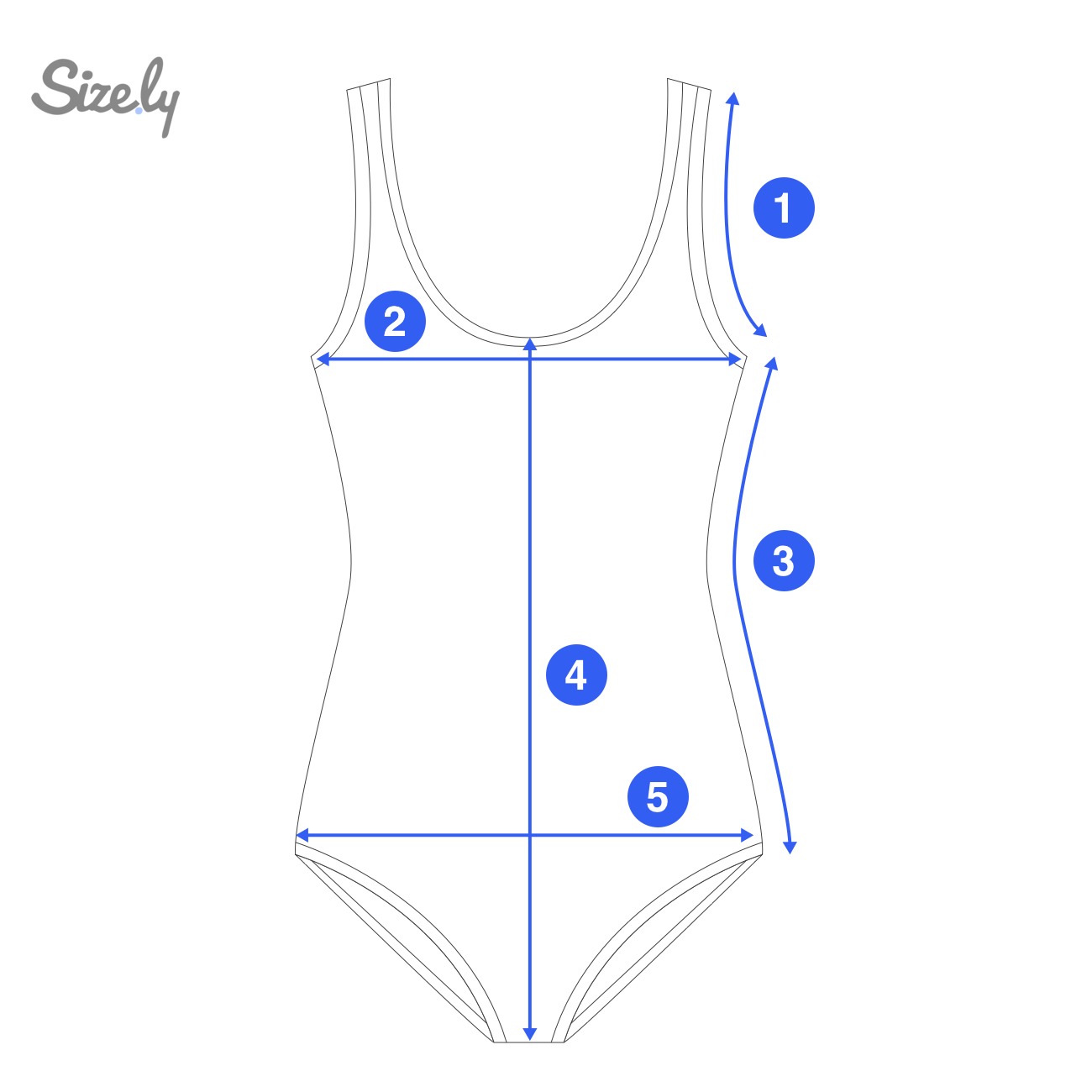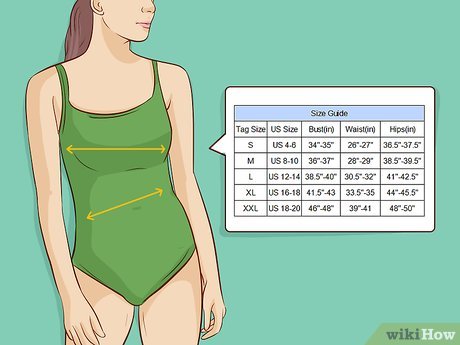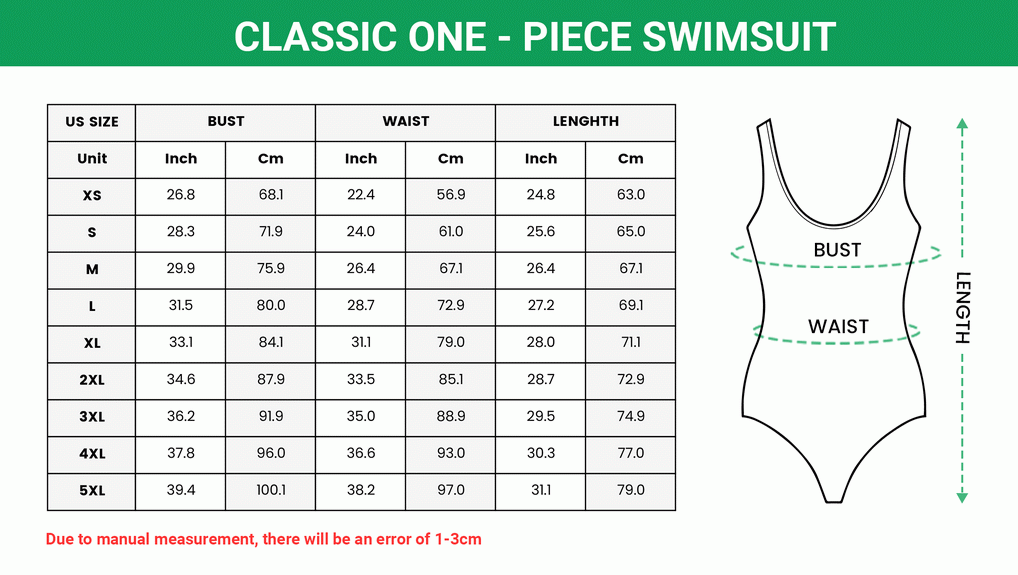Content Menu
● Why Accurate Swimsuit Sizing Matters
>> Comfort and Fit
>> Confidence Boost
>> Performance in Water
● Understanding the Importance of Proper Measurements
● Introduction to Measuring One-Piece Swimsuits
>> Essential Tools for Measuring
>> Preparing for Measurements
>> Key Measurements for One-Piece Swimsuits
>>> Bust Measurement
>>> Waist Measurement
>>> Hip Measurement
>>> Torso Measurement
>>> Under Bust Measurement (for women)
>> Additional Measurements to Consider
>> Tips for Accurate Measurements
>> Understanding Swimsuit Size Charts
>> Considerations for Different Body Types
● Trying On Your Swimsuit
● Adjusting and Caring for Your Swimsuit
● Conclusion
● Frequently Asked Questions (FAQs)
>> What if My Measurements are Between Sizes?
>> How Often Should I Check My Measurements?
>> Can I Use the Same Measurements for Different Brands?
Unsure of how to find the perfect one piece swimsuit size? Discover the top tips for measuring correctly and confidently fitting.
Finding the perfect one-piece swimsuit can be a challenging task, especially when it comes to getting the right size. A well-fitting swimsuit not only enhances your appearance but also ensures comfort and confidence while you enjoy your time in the water. In this comprehensive guide, we'll walk you through the process of measuring for a one-piece swimsuit, providing you with all the information you need to make an informed decision when purchasing your next swimwear.

Why Accurate Swimsuit Sizing Matters
Getting the right size for your swimsuit is really important! Accurate swimsuit sizing helps in many ways. When you find the perfect swimsuit size, it can make all the difference in how you feel. Let's look at why this matters so much.
Comfort and Fit
A swimsuit that fits well is so much more comfortable. If your swimsuit is too tight, it can pinch and make you feel uncomfortable. If it's too loose, it might slide around or not give you the support you need. A well-fitting swimsuit allows you to move freely, swim, and play without any worries. So, making sure you have accurate swimsuit sizing is key to enjoying your time at the beach or pool!
Confidence Boost
Wearing the right size swimsuit can really boost your confidence. When your swimsuit fits you perfectly, you can strut your stuff with pride! You'll feel great about how you look, and that makes having fun in the water even better. When you feel good in your swimsuit, you can focus on swimming and playing instead of worrying about how you look.
Performance in Water
Lastly, accurate swimsuit sizing helps you perform better in the water. When your swimsuit fits right, it can help you swim faster and move better. A good fit means less drag in the water, which can make swimming feel easier and more enjoyable. Whether you're swimming in a race or just splashing around, the right size swimsuit can help you make the most of your time in the water!
Understanding the Importance of Proper Measurements
Before we dive into the specifics of measuring for a one-piece swimsuit, it's crucial to understand why accurate measurements are so important. A swimsuit that fits properly will not only look better but will also provide the necessary support and coverage for various activities in and around the water. Ill-fitting swimwear can lead to discomfort, constant adjustments, and even wardrobe malfunctions – situations we all want to avoid, especially in public settings.
Introduction to Measuring One-Piece Swimsuits
Finding the perfect one-piece swimsuit size can be a fun adventure! Just like trying on a new outfit, measuring yourself correctly is very important. It helps you choose a swimsuit that fits well and feels comfortable.
When your swimsuit fits just right, it can make you feel happy and confident. You will be ready to jump into the pool or play at the beach without worrying about your swimsuit. In this guide, we will show you how to measure your body accurately. It will be easy and enjoyable, so you can find the perfect swimsuit size!
Essential Tools for Measuring
To get started, you'll need a few basic tools:
1. A flexible measuring tape: This is the most important tool for taking accurate body measurements. A cloth or plastic measuring tape works best as it can easily conform to your body's curves.
2. A mirror: Having a full-length mirror will help you ensure that you're holding the measuring tape correctly and at the right positions on your body.
3. A pen and paper: You'll want to write down your measurements as you go along to avoid forgetting them.
4. A well-fitting bra (for women): When measuring your bust, wearing a bra that fits well will give you the most accurate measurements for your swimsuit.
Preparing for Measurements
Before you begin taking measurements, there are a few steps you should follow to ensure accuracy:
1. Wear minimal clothing: Ideally, you should measure yourself while wearing only your underwear or form-fitting clothing. Bulky clothes can add extra inches and lead to inaccurate measurements.
2. Stand up straight: Maintain good posture throughout the measuring process. Stand with your feet together and your arms relaxed at your sides.
3. Use a mirror: Position yourself in front of a full-length mirror to double-check that the measuring tape is level and positioned correctly on your body.
4. Be honest: Remember, these measurements are for your benefit. Being honest with your measurements will help you find the best-fitting swimsuit.
Key Measurements for One-Piece Swimsuits
Now, let's go through the essential measurements you'll need to take for a one-piece swimsuit:

Bust Measurement
The bust measurement is crucial for ensuring proper fit and support in the chest area of your swimsuit. Here's how to measure your bust:
◆ Wrap the measuring tape around the fullest part of your bust, typically across the nipple line.
◆ Make sure the tape is parallel to the ground and snug but not too tight.
◆ Take a deep breath and exhale, then note the measurement.
For those with a larger bust, it's especially important to get this measurement right to ensure adequate support and coverage.
Waist Measurement
Your waist measurement helps determine how the swimsuit will fit around your midsection. Follow these steps:
◆ Locate your natural waistline, which is typically the narrowest part of your torso, just above your belly button.
◆ Wrap the measuring tape around your waist, keeping it parallel to the ground.
◆ Breathe normally and measure after exhaling.
◆ Avoid sucking in your stomach – you want an accurate measurement for the best fit.
Hip Measurement
The hip measurement is important for ensuring the swimsuit fits comfortably around your lower body. Here's how to measure:
◆ Stand with your feet together.
◆ Wrap the measuring tape around the fullest part of your hips and buttocks.
◆ Keep the tape parallel to the ground and snug against your body.
◆ Note the measurement.
Torso Measurement
The torso measurement is particularly important for one-piece swimsuits to ensure the suit is long enough for your body. To measure your torso:
◆ Place the end of the measuring tape at the center of your shoulder, right where it meets your neck.
◆ Run the tape down the front of your body, between your legs, and up your back to meet the starting point.
◆ This measurement should be taken while standing straight but not rigidly.
Under Bust Measurement (for women)
For women, the under bust measurement can be helpful, especially for swimsuits with built-in bra support:
◆ Wrap the measuring tape around your ribcage, just under your bust.
◆ The tape should be snug and parallel to the ground.
◆ Take the measurement after exhaling.
Additional Measurements to Consider
While the above measurements are the most crucial for finding the right size one-piece swimsuit, there are a few additional measurements that can be helpful:
1. Shoulder to Bust: Measure from the top of your shoulder to the fullest part of your bust.
2. Shoulder to Waist: Measure from the top of your shoulder to your natural waistline.
3. Inseam: For swimsuits with boy shorts or longer leg coverage, measure from your crotch to where you want the leg to end.
4. Arm Circumference: For swimsuits with sleeves, measure around the fullest part of your upper arm.
Tips for Accurate Measurements
To ensure you get the most accurate measurements possible, keep these tips in mind:
1. Measure twice: Take each measurement at least twice to confirm accuracy.
2. Stay consistent: Always use the same measuring technique to ensure consistency across all your measurements.
3. Don't pull too tight: The measuring tape should be snug against your skin but not so tight that it's digging in or compressing your body.
4. Use a mirror: Double-check your tape placement using a mirror to ensure it's level and in the correct position.
5. Measure yourself: While it might seem easier to have someone else measure you, measuring yourself often leads to more accurate results as you can feel where the tape is positioned.
Understanding Swimsuit Size Charts
Once you have your measurements, you'll need to compare them to the size chart of the swimsuit brand you're interested in. It's important to note that sizes can vary between brands, so always refer to the specific brand's size chart.
Most size charts will list measurements for bust, waist, and hips, corresponding to their sizes (e.g., Small, Medium, Large, or numeric sizes like 6, 8, 10). Some may also include torso measurements for one-piece suits.
If your measurements fall between two sizes, it's generally recommended to choose the larger size for a more comfortable fit. Remember, you can always have a swimsuit taken in slightly, but it's much harder to let one out.

Considerations for Different Body Types
While accurate measurements are crucial, it's also important to consider your body type when choosing a one-piece swimsuit:
1. Hourglass Figure: If your bust and hips are roughly the same size with a smaller waist, look for styles that accentuate your waist.
2. Pear Shape: For those with hips wider than their bust, consider styles with more coverage on the bottom and details on top to balance your figure.
3. Apple Shape: If you carry weight around your midsection, look for suits with ruching or tummy control panels for a flattering fit.
4. Athletic Build: For a straighter figure, consider suits with details that create the illusion of curves, such as cutouts or color blocking.
5. Full Bust: If you have a larger bust, look for suits with built-in support, underwire, or adjustable straps for proper fit and comfort.
Trying On Your Swimsuit
Once you've used your measurements to select a size and ordered your swimsuit, it's important to try it on properly:
1. Put the swimsuit on carefully, ensuring it's adjusted correctly on your body.
2. Move around, stretch, and sit down to see how the suit feels in different positions.
3. Check for any gaping, pulling, or areas where the suit feels too tight.
4. Make sure the leg openings and neckline provide adequate coverage and comfort.
5. If possible, try on the suit in both dry and wet conditions, as some materials may become more clingy when wet.
Adjusting and Caring for Your Swimsuit
To ensure your one-piece swimsuit continues to fit well over time:
1. Always follow the care instructions on the label.
2. Rinse your suit in fresh water after each use, especially if exposed to chlorine or saltwater.
3. Avoid wringing out your swimsuit; instead, gently squeeze out excess water.
4. Lay your suit flat to dry, away from direct sunlight.
5. Rotate between multiple swimsuits if possible to allow each one time to regain its shape between wears.

Conclusion
Measuring for a one-piece swimsuit may seem like a daunting task, but with the right tools and techniques, you can ensure a perfect fit that will make you look and feel your best at the beach or pool. Remember, taking accurate measurements is just the first step – considering your body type, trying on the suit, and proper care are all important factors in finding and maintaining the perfect one-piece swimsuit.
By following this comprehensive guide, you'll be well-equipped to find a one-piece swimsuit that fits you like a glove, providing comfort, support, and style for all your water-based activities. Whether you're lounging by the pool, swimming laps, or hitting the beach, a well-fitting swimsuit will boost your confidence and allow you to fully enjoy your time in the sun and surf. Happy swimming!
Frequently Asked Questions (FAQs)
What if My Measurements are Between Sizes?
If your measurements fall between sizes, don't worry! This happens to many people. A good tip is to choose the larger size for a more comfortable fit. You can also think about how you like your swimsuit to feel. If you want it to be snug and supportive, go for the smaller size. If you prefer a looser fit, choose the bigger size. Remember, the perfect swimsuit size is all about what feels best for you!
How Often Should I Check My Measurements?
It's a good idea to check your measurements every six months or so. This is because our bodies can change as we grow. If you try on a new swimsuit or notice that your current one feels tight or loose, measure yourself again. Keeping track of your swimsuit measurement tips can help you find the best fit whenever you need a new swimsuit!
Can I Use the Same Measurements for Different Brands?
Not always! Different brands can have their own sizing charts. This means that your perfect swimsuit size in one brand might not be the same in another. It's always best to check the sizing guide of the brand you want to buy from. If you're unsure, try on different sizes to see which one feels the best. Remember, accurate swimsuit sizing will help you look great and feel comfortable!



































































